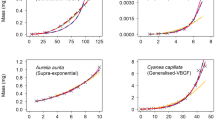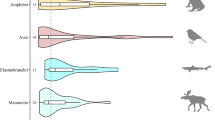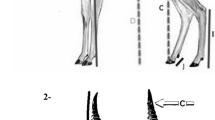Abstract
ON Mr. Julian Huxley's very interesting results as to the fiddler-crab (NATURE, December 20, p. 895), I suggested at Cambridge that in his equation if we are to rationalise the index, comes nearer to his results than does and allows of the conceivable physiological explanation that the ratio of claw-weight to body-weight is the isogonous ratio multiplied by a ratio proportional to a growing area in the body. Thus the weight of the claw might be the isogonous weight multiplied by the ratio of an isogonous surface secreting a male hormone to a surface secreting a female hormone and remaining of constant area. I also pointed out that in the roe of the plaice we have a sexual appendage, shed every year, and every successive year showing an increasing rate between its weight and the weight of the body. The parallel proves so astonishingly close that I ask space to communicate the following two facts:
This is a preview of subscription content, access via your institution
Access options
Subscribe to this journal
Receive 51 print issues and online access
$199.00 per year
only $3.90 per issue
Buy this article
- Purchase on Springer Link
- Instant access to full article PDF
Prices may be subject to local taxes which are calculated during checkout
Similar content being viewed by others
Author information
Authors and Affiliations
Rights and permissions
About this article
Cite this article
BIDDER, G. Constant Differential Growth-ratios and their Significance. Nature 115, 155–156 (1925). https://doi.org/10.1038/115155a0
Issue Date:
DOI: https://doi.org/10.1038/115155a0
Comments
By submitting a comment you agree to abide by our Terms and Community Guidelines. If you find something abusive or that does not comply with our terms or guidelines please flag it as inappropriate.



